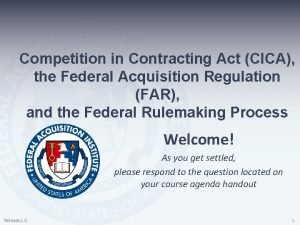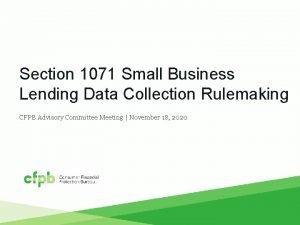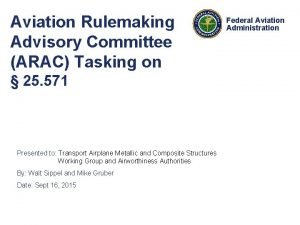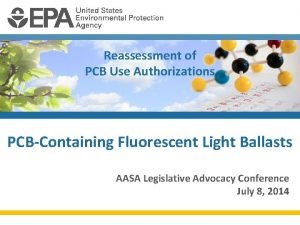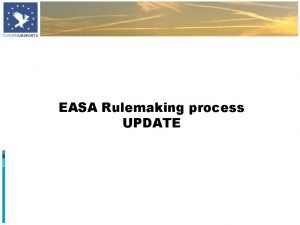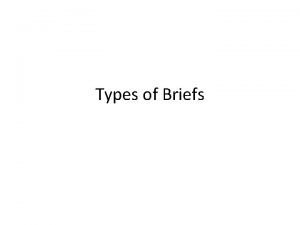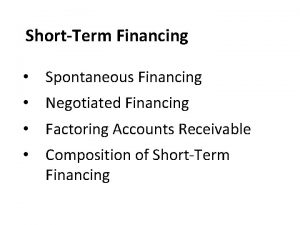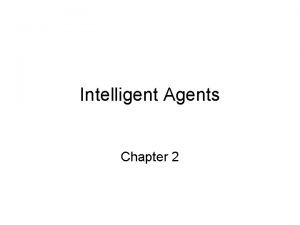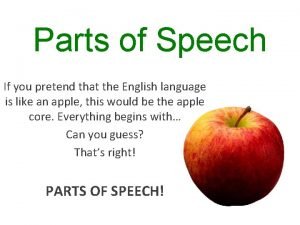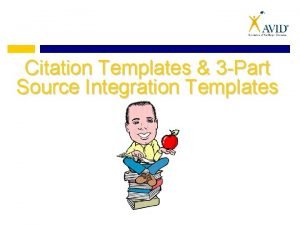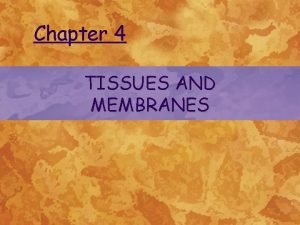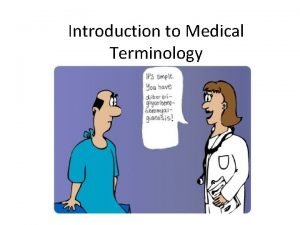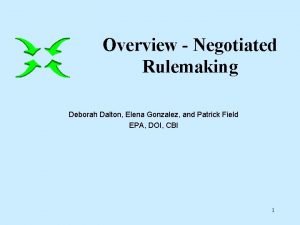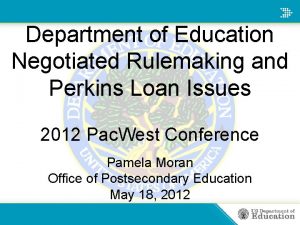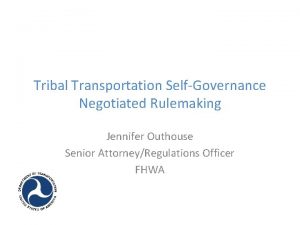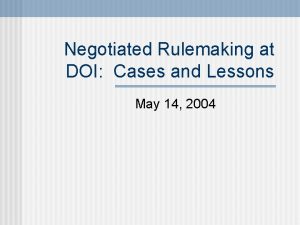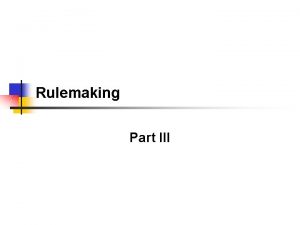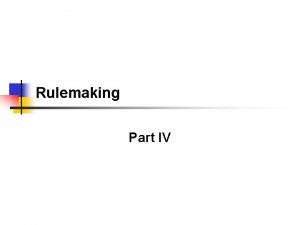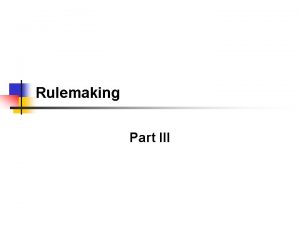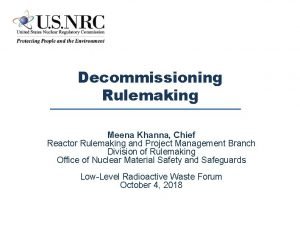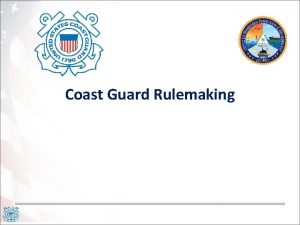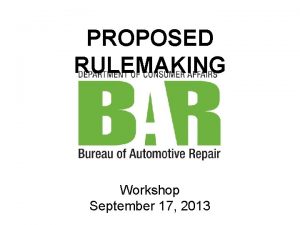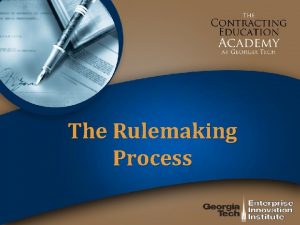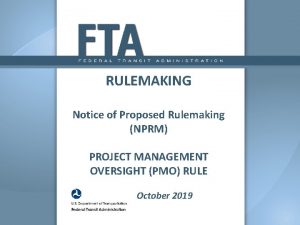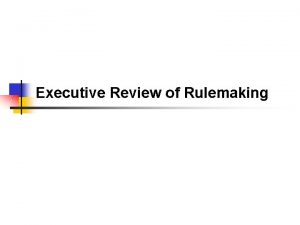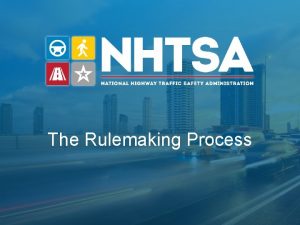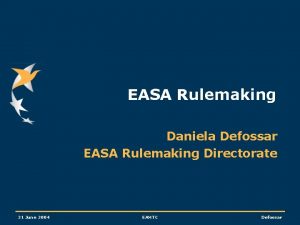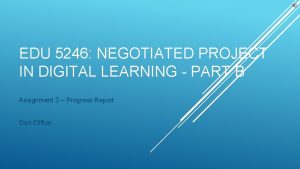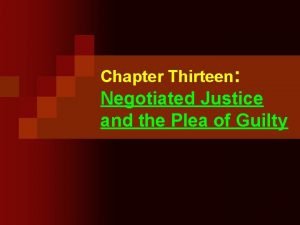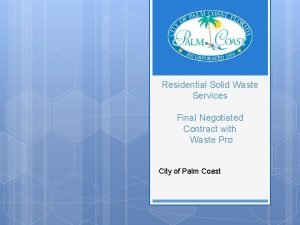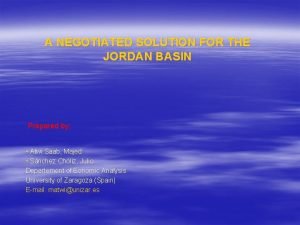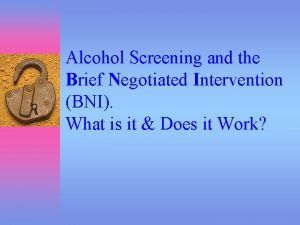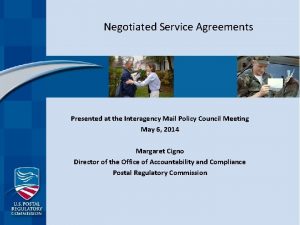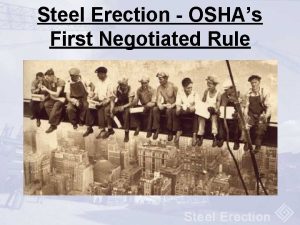Rulemaking Part II Negotiated Rulemaking Negotiated Rulemaking n


































- Slides: 34

Rulemaking Part II

Negotiated Rulemaking

Negotiated Rulemaking n n n What is this? Why is often used in environmental rulemaking? What are the advantages? What are the public participation issues? Assume you are regulating wood stoves n Which groups are most likely to be able to participate? 3

Negotiated Rulemaking and Notice and Comment n n The negotiation happens before the rule is proposed in the FR. The standards for publication and notice are the same as for all other notice and comment rules. This solves any ex parte contacts problem because the rule must be fully justified by its published record. Interested parties can still comment. 4

Ex Parte Communications in Litigation n What is an ex parte communication in litigation? Why do we ban them in litigation? If a party in a lawsuit wants to talk to the judge, how are ex parte contacts avoided?

Ex Parte Communications in Rulemaking n n n How does the notice provision in rulemaking change the issues in ex parte communications? Why aren’t ex parte communications before the promulgation of the rule a problem? When could ex parte communications be an issue? n How can you cure this? 6 n The key is whether the published

Bias and Prejudice n n n Why do we worry about bias and prejudice in litigation? What was the trade off in adjudication, where we accept potential sources of bias that would not be acceptable in an Article III trial? How does the process of rulemaking minimize the bias and prejudice problem? 7

Association of National Advertisers , Inc. v. FTC, 627 F. 2 d 1151 (D. C. Cir. 1979) n n n FTC is adopting rules on TV advertising directed at children. n Chairman has written and spoken at length on the evils of TV ads aimed at children n Plaintiffs seek to disqualify him because of bias Court held that plaintiffs must show clear and convincing evidence that he has an unalterably closed mind on matters critical to the rulemaking No rulemaking has ever been overturned on 8

Sierra Club v. Costle, 657 F. 2 d 298 (D. C. Cir. 1981) n n Rulemaking on coal fired power plants n Why is this controversial then and more so now? Plaintiffs claimed that the president influenced the agency decision after the comment period. n Is that wrong? Senator Bird also weighed in What do plaintiffs need to show to establish undue influence? n Why is the outcome test, combined with the record, a good solution? 9

What is the President's Role in Rulemaking? (not independent agencies) n n Controls and supervises executive branch decisionmaking n Traditionally expressed through OIRA/OMB n How is the role different in adjudications and executive orders? When should the president's contacts be documented? n When the statute requires that they be docketed n If the rule is based on factual information 10

Congressional Mandates (Hybrid Rulemaking) at the FTC n n n issue an advance notice of proposed rulemaking, which describes the area of inquiry under consideration and invites comments from interested parties; send the advance notice and, 30 days before its publication, the notice of proposed rulemaking to certain House and Senate committees; hold a hearing presided over by a hearing officer at which persons may make oral presentations and in certain circumstances to conduct cross-examination of persons; include a statement of basis and purpose to address certain specified concerns; and conduct a regulatory analysis of both the proposed and final rules that describes the proposal and alternatives that would achieve the same goal and analyzes the costs and benefits of the proposal and the 11 alternatives.

Should State Procedures Mirror Federal?

Should State Rules Differ from Federal Rules on Notice and Comment? n n n Limited staff n Greater reliance on the expertise of board members, rather than staff n Board may hear lots of testimony and review a lot of info - they cannot afford the time and effort to put together volumes of supporting info for regs n What about LA's 300+ tiny boards? Should state agencies have a reduced publication requirement? Should they be able to publish rules without explanation and only have to explain if asked? 13

Executive Review of Rulemaking

Executive Orders Regulating Rulemaking n n n What is the president's authority over rulemaking? What about for independent agencies? Why should the president (ORIA) exercise authority over rulemaking? n Coordination of agencies? n Assuring that the agencies carry out the administration's objectives? 15

Acronyms n n OMB - Office of Management and Budget OIRA - Office of Information and Regulatory Affairs 16

Executive Orders on Rulemaking n n n E. O. 12630—Governmental Actions and Interference with Constitutionally Protected Property Rights— Requires agencies when they issue rules with significant takings implications to discuss and identify the takings issues in their submissions to OMB. E. O. 12898—Federal Actions to Address Environmental Justice in Minority Populations and Low-Income Populations—Requires agencies when practicable and appropriate to translate public documents relating to human health or the environment for limited- English-speaking populations. E. O. 12988—Civil Justice Reform—Requires 17 agencies to review any rules they issue to assure

Executive Orders on Rulemaking n n E. O. 13045—Protection of Children from Environmental Health Risks and Safety Risks— Requires agencies when they issue economically significant rules that concern health or safety risks that may disproportionately affect children to evaluate specifically the environmental or safety effects of the regulation and to explain why the planned rule is preferable to other alternatives. E. O. 13132—Federalism—Requires agencies when they issue rules that impose substantial costs on state and local governments to consult with state and local officials early in the process and to publish in the preamble a description of the agency’s consultation, the nature of their concerns, the need 18 for the rule, and the extent to which the officials’

Executive Orders on Rulemaking n n n E. O. 13175—Consultation and Coordination with Indian Tribal Governments—Requires agencies to coordinate and consult with Indian tribes when they issue rules that have substantial direct effects on one or more Indian tribes, on the relationship between the Federal Government and Indian tribes, or on the distribution of power and responsibilities between the Federal Government and Indian tribes. E. O. 13211—Actions Concerning Regulations That Significantly Affect Energy Supply, Distribution, or Use—Requires agencies to prepare a Statement of Energy Effects with regard to significant regulatory actions that are either likely to have a significant adverse effect on the supply, distribution, or use of energy or designated by the Administrator of the Office of Information and Regulatory Affairs as a significant energy action. E. O. 13272—Proper Consideration of Small Entities in Agency Rulemaking—Requires agencies to provide draft rules to the Chief Counsel for Advocacy in the Small Business Administration and to give ‘‘every appropriate consideration’’ to the Chief Counsel’s 19 comments.

E. O. 13563—Improving Regulation and Regulatory Review— Elaborates five new principles to guide regulatory decisionmaking. n n n First, agencies are directed to promote public participation, in part through making relevant documents available on regulations. gov to promote transparency and comment. It also directs agencies to engage the public, including affected stakeholders, before rulemaking is initiated. Second, agencies are directed to attempt to reduce ‘‘redundant, inconsistent, or overlapping requirements, ’’ in part by working with one another to simplify and harmonize rules. Third, agencies are directed to identify and consider flexible approaches to regulatory problems, including warnings and disclosure requirements. Such approaches may ‘‘reduce burdens and maintain flexibility and freedom of choice for the public. ’’ Fourth, agencies are directed to promote scientific integrity. Fifth, and finally, agencies are directed to produce plans to 20

The Big One - Executive Order 12866 n OIRA must review rules that have an impact of more than 100 M aggregate or substantial impact on a segment of the economy or any thing else. 21

The Regulatory Philosophy n Federal agencies should promulgate only such regulations as are required by law, are necessary to interpret the law, or are made necessary by compelling public need, such as material failures of private markets to protect or improve the health and safety of the public, the environment, or the well-being of the American people. In deciding whether and how to regulate, agencies should assess all costs and benefits of available regulatory alternatives, including the alternative of 22

CBA under 12866 n Costs and benefits shall be understood to include both quantifiable measures (to the fullest extent that these can be usefully estimated) and qualitative measures of costs and benefits that are difficult to quantify, but nevertheless essential to consider. 23

Choosing Among Alternatives n Further, in choosing among alternative regulatory approaches, agencies should select those approaches that maximize net benefits (including potential economic, environmental, public health and safety, and other advantages; distributive impacts; and equity), unless a statute requires another regulatory approach. 24

What must the agency provide OIRA - I n An assessment, including the underlying analysis, of benefits anticipated from the regulatory action (such as, but not limited to, the promotion of the efficient functioning of the economy and private markets, the enhancement of health and safety, the protection of the natural environment, and the elimination or reduction of discrimination or bias) together with, to the extent feasible, a 25 quantification of those benefits;

What must the agency provide OIRA - II n An assessment, including the underlying analysis, of costs anticipated from the regulatory action (such as, but not limited to, the direct cost both to the government in administering the regulation and to businesses and others in complying with the regulation, and any adverse effects on the efficient functioning of the economy, private markets (including productivity, employment, and competitiveness), 26 health, safety, and the natural

What must the agency provide OIRA - III n An assessment, including the underlying analysis, of costs and benefits of potentially effective and reasonably feasible alternatives to the planned regulation, identified by the agencies or the public (including improving the current regulation and reasonably viable nonregulatory actions), and an explanation why the planned regulatory 27

12866 and Rulemaking Why is there a special provision for analyzing impact on small businesses? n Does an executive order create private rights, i. e. , can you challenge an agency's OIRA showing in court? n 28

Where does the Court Stand on Requiring CBA? (Not in the book. ) n n n The enabling act is controlling, in theory. n In AFL-CIO v. API, 448 U. S. 607 (1980), the court found that OSHA enabling act required CBA on standards for benzene n In American Textile Mfrs. Institute v. Donovan, 452 U. S. 490 (1981), the court found that OSHA did not have to do CBA because it was not required by the statute Can the agency do CBA even if not required to? The court increasingly imposes something that looks like CBA during hard look, even if 29

How do these CBA and Review Requirements Affect Agencies? n n What are the effects on the agency? n Fewer rules? n Better documented rules? n Less regulation? n More danger to the public? Who benefits? Who loses? What is the financial impact? 30

Statutory Requirements n n National Environmental Policy Act (NEPA) imposes requirements if the rule affects the environment Regulatory Flexibility Act - small business n Only direct effect on small business n Rules on small truck standards might affect small business owners, but since it is directed at manufacturers, small business owners do not have standing Paperwork Reduction act - every rule that requires reporting must be reviewed n CDC newsletter cannot ask for reader feedback Statutory requirements can create private rights 31

Information Quality Act n n n Requires OMB to adopt guidelines ensuring and maximizing the quality, objectivity, utility, and integrity of information (including statistical information) disseminated by Federal agencies Why is this a redundant requirement? What could be the purpose of this requirement? 32

Unfunded Mandates n n n Unfunded Mandates Act of 1995 - Agency must do a CBA if the costs exceed 100 M n What is an unfunded mandate? n This will be a huge issue in the 2 for 1 EO. What would be the impact of banning unfunded mandates? What are the types and impact of unfunded mandates on public schools? 33

Congressional Review Act n n Most rules, including those exempt from notice and comment, must be reported to Congress, which has 60 days to review them n There is a provision for emergency rules What can Congress do if it does not like the rule? n When is this likely to happen? n What about independent agencies? 34
 Rulemaking process steps
Rulemaking process steps 1071 rulemaking
1071 rulemaking Aviation rulemaking advisory committee
Aviation rulemaking advisory committee Rulemaking process steps
Rulemaking process steps Easa rulemaking process
Easa rulemaking process Brief negotiated interview
Brief negotiated interview Negotiated brief
Negotiated brief Spontaneous financing includes
Spontaneous financing includes Brainpop ratios
Brainpop ratios Part to part variation
Part to part variation What is technical description
What is technical description Addition symbol
Addition symbol Parts of front bar
Parts of front bar Part to part ratio definition
Part to part ratio definition The phase of the moon you see depends on ______.
The phase of the moon you see depends on ______. The part can never be well unless the whole is well
The part can never be well unless the whole is well Peas description for interactive english tutor
Peas description for interactive english tutor Casting small parts
Casting small parts To part of speech
To part of speech Four part processing model for word recognition
Four part processing model for word recognition Part of camera
Part of camera Source integration example
Source integration example What part
What part Cow nerve cell
Cow nerve cell Ntsb part 830
Ntsb part 830 Polk's war plan
Polk's war plan Heart of darkness part 3
Heart of darkness part 3 Arthromegaly
Arthromegaly Que mange une coccinelle
Que mange une coccinelle Draw and label the structure of egg
Draw and label the structure of egg Diagram of bean plant
Diagram of bean plant Introduction body conclusion
Introduction body conclusion @jesus david pineda j:men. swap part 1
@jesus david pineda j:men. swap part 1 Female part of a flower
Female part of a flower Roger trinquier
Roger trinquier
